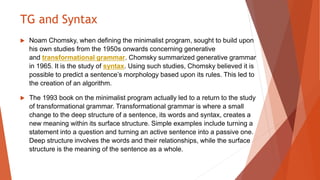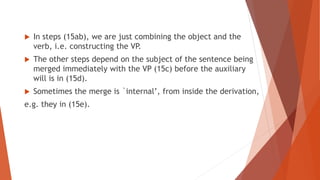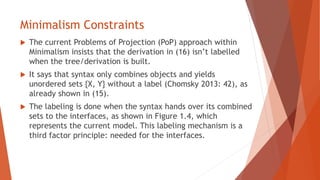The document discusses Noam Chomsky's Minimalist Program for developing a theoretical framework for syntax. It aims to eliminate anything not "virtually necessary" from linguistic theory. Universal Grammar is assumed to provide features, procedures to assemble lexical items, and a small set of basic operations. The central idea is that the computational system of human language is the optimal, simplest solution to interface conditions between form and meaning. Merge and move are the key operations that combine words. The current minimalist model involves selecting and merging items from the lexicon to build syntactic structures in a recursive, bottom-up fashion.

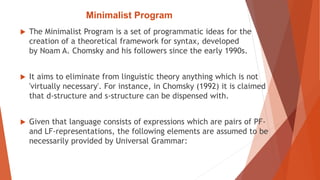

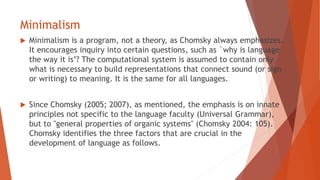

![2. Experience, Principles not specific
to FL
2. Experience, which leads to variation, within a fairly narrow
range, as in the case of other subsystems of the human
capacity and the organism generally” (Chomsky 2005: 6);
3. Principles not specific to FL [the Faculty of Language].
Some of the third factor principles have the flavor of the
constraints that enter into all facets of growth and
evolution.... Among these are principles of efficient
computation”. (Chomsky 2007: 3)](https://image.slidesharecdn.com/minimalism-230315065232-fc3f45fa/85/Minimalism-pptx-6-320.jpg)



